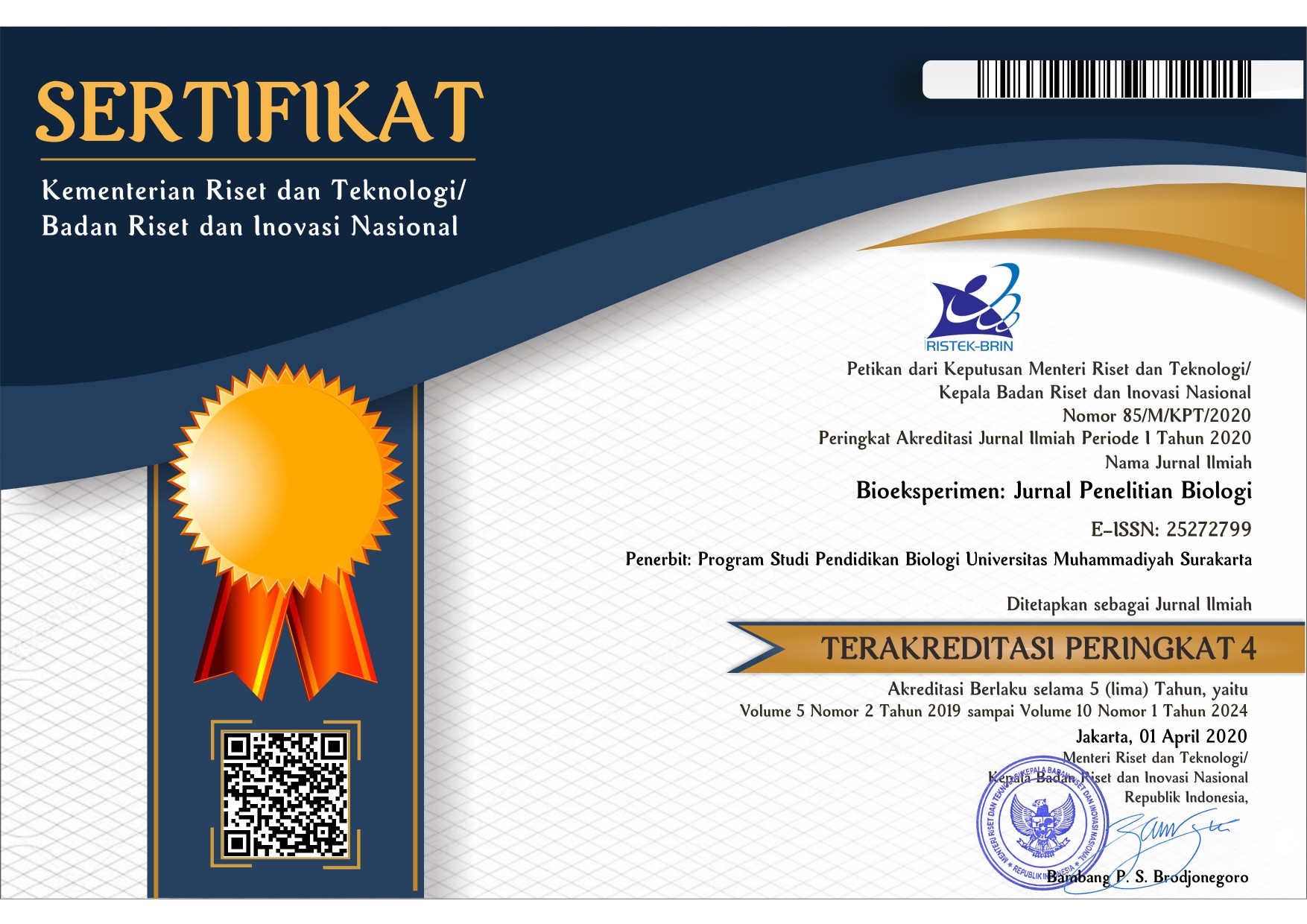Daya Tetas Telur Aedes aegypty Strain Japan Yang Disimpan Selama Seminggu Pada Suhu Ekstrem
I Gede Wempi Surya Permadi(1*), Yulian Taviv(2), Lasbudi Pertama Ambarita(3)(1) Loka Litbang P2B2 Departemen Kesehatan Baturaja Sumatera Selatan
(2) Loka Litbang P2B2 Departemen Kesehatan Baturaja Sumatera Selatan
(3) Loka Litbang P2B2 Departemen Kesehatan Baturaja Sumatera Selatan
(*) Corresponding Author
Abstract
Keywords
Full Text:
PDFReferences
Arslan, A., Muchtar, M., Mushtag, S., Zakky, A., Hammad, M., & Bhatti, A. (2015). Arslan A, Muchtar MU, Mushtag S, Zakky AB, Hammad M dan Bhatti A. Comparison of Suscepbility Status of Labolatory and Field Populations of Aedes aegypti Against Temephos in Rawalpindi. Journal of Entomology and Zoology Studies, Vol 3(4): p 374-378.
Chakraborty, A., & Chatterjee, S. (2015). Studies on the Fitness Component and Comparative Ovipotition Preferences of Aedes albopictus in West Bengal. International Journal of Mosquitoes Research, Vol 2(3):156–160. .
Eisen, L., Monaghan, A., Fuentes, S., Steinhoff, D., Hayden, M., & Bieriner, P. (2014). The Impact of Temperature on The Bionomic of Aedes aegypti .Journal of Medical Entomology. 2014;51(3):496-516. Journal of Medical Entomology, Vol 51(3): p 496-516.
Garzon, M., Jensen, O., & Sweighmaan. (2013 ). Resistance to Freezing Temperatur in Aedes Eggs from Two Different Climate in Several Areas Argentine. Journal of Vector Ecology, Vol 38(2): p 339-344.
Lahturohmi, H., Wahyuningsih, N., & Murwani, R. (2016). Lahturohmi HPH, Wahyuningsih NE dan Murwani R. Hubungan Perilaku Penggunaan Insektisida, Perilaku 3M dan Keberadaan Breeding Place dengan Kejadian DBD di Kota Semarang. Jurnal Kesehatan Masyarakat, Vol 4(4): p 933-942.
Lifdall, T., & Edgerly, J. (2014). Lifdall TP dan Edgerly JS. Egg Hatching Inhibition: Field Evidence for Population Regulation in a Treehole Mosquito. Ecological Entomology Journal. 2014;12:395-399. Ecological Entomology Journal, Vol 12: p 395-399.
Lucia, Y., Erniwati, I., & Bintara, A. (2010 ). Hubungan Karakteristik Lingkungan Kimia dan Biologi dengan Keberadaan Larva Aedes aegypti di Wilayah Endemis DBD diKota Makasar tahun 2013. Majalah Parasitologi Indonesia, Vol 6(1): p 31-45.
Makara, M., Ngumbi, P., & Lee, D. (2015). Effects of Temperature on the Growth and Development Mosquitoes. Journal of Pharmacy and Biological Sciences, Vol 10(6): p 1-10.
Ramasamy, R., Jude, P., Vellupilai, L., Eswaromohan, E., & Surendran, S. (2014). Biological Differences between Brackish and Fresh Water Derived Aedes aegepty. Jurnal Plosone, Vol 9(8):p 1-10.
Wang, C., Teng, H., Lee, S., Lin, C., Wu, J., & Wu, H. (2013). Efficasy of Various Larvacides AgainstAedes aegypti Immatures in Labolatory. Japan Journal Infectious Disease, Vol 66(4): p 341-344.
Widyastuti, D., & Marbawati, D. (2016). Efek Larvasida Bakteri Kitininolitik Dari Limbah Kulit Uang Terhadap Larva Aedes aegypti. Jurnal Aspirator, Vol 8(1): p 47-54.
Article Metrics
Abstract view(s): 739 time(s)PDF: 810 time(s)
Refbacks
- There are currently no refbacks.








